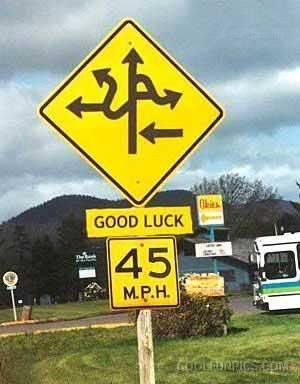
If you have a map to take you from A to B, and B is not where it should be, sometimes you need to follow your nose. This is easier if you have road signs to follow, as one’s nose isn’t always reliable. And if there’s construction going on, well… good luck, pal.
This is a frustrating thing to deal with while driving, but in writing a story, sometimes it pays to mislead your reader. They might think a story is moving in one direction, but when it begins to head in another, they might find themselves disoriented or confused. If that confusion is also present in the protagonist, it keeps the reader intimately involved. If they didn’t relate to the hero before, they sure do now.
On the other hand, if you get too complicated or twisty in the reasoning of your plot, you might lose people entirely. LOST was accused of “jumping the shark” at least once during its run due to some of the places its plot went. Inception is confusing for some, but if you actually pay attention from beginning to end, you should be able follow the plot’s turns and redirections. That aforementioned confusion is something I still don’t get.
Anyway, making a reader work to reach a conclusion or laying the groundwork for a labyrinthine journey is ultimately rewarding for everyone involved if you can do it right. The reader feels a sense of accomplishment in putting things together themselves, especially if they can do it before the characters. On top of that, when they’ve finished, they’re more likely to share their experiences with others, which is good for the author. Finally, if enough threads are tied up but a few left dangling, it can cause the reader to look forward to the next work from that same author, thus winning the reader’s loyalty.
That is, provided you don’t get the reader so lost they fling the work across the room in frustration. Nobody wants that. It’s hard on the book. And, occasionally, the furniture.



Leave a Reply